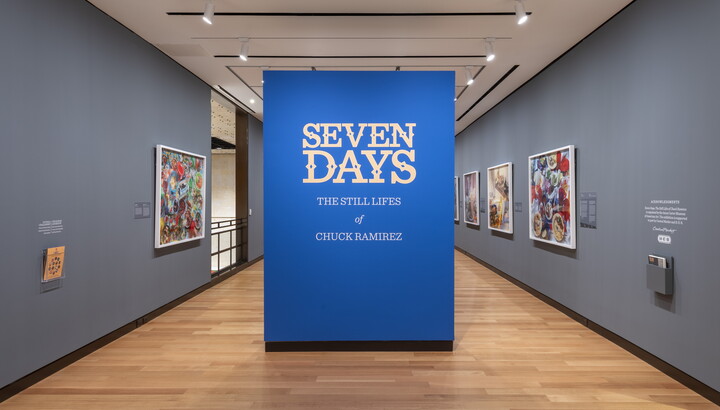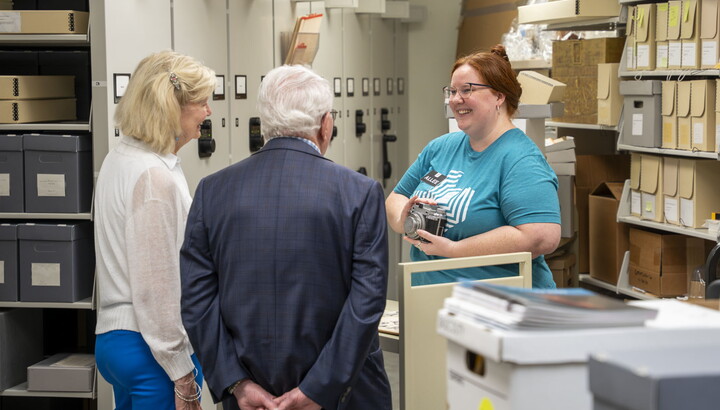The Carter Blog
Carter ARTicles
Fire and fences: The stories of the Texas prairie
Aug 08, 2023
As a Carter member (if you’re not a member, what are you waiting for? Join now!), you receive our biannual Carter Magazine, chock-full of stories you can only get from the Carter. The current issue features excerpts from an article by artist James Prosek, whose exhibition Trespassers: James Prosek and the Texas Prairie opens on September 16. Below is the full article.
Before I came to Texas, I had never met people who had such a deep passion for… grass. Visiting remnant prairies (areas of native grasslands that had never been overgrazed or plowed) and restoration sites (areas where landowners are trying to bring native grasslands back) in the Texas Hill Country, single strands of little bluestem sent our hosts—from landowners and managers to landscape architects and biologists—into fits of rapture. Texans’ love of grass proved contagious.
I can’t say I had ever looked at grass closely before—or at all. Where I grew up in Connecticut and still live, grass to me was just stuff that grew on highway medians or in hay meadows. Now, I was staring at a single six-foot-tall stalk of big bluestem, wondering how to creatively capture what I beheld—a range of purples and reds and greens, sometimes with a glaucous haze, like on a plum, or with a waxy glossy surface. The grasses were beautiful, insanely so.
After my first trip to Texas, my perspective shifted completely. When I was shown the major prairie grass species, sometimes called the big four—big bluestem, little bluestem, switchgrass and Indiangrass—I had a vague, almost nostalgic response. I had seen some before, in childhood, growing in abandoned plots, parts of old farms, mowed every few years or lightly grazed by dairy cows, on rocky hillsides spotted with red cedars. They poked above the cool-season grasses late in the year, beautiful blueish green in summer, some with reddish colors in fall.
When I returned home, I sought out these native grasses in Connecticut and found all four of the major species I’d learned about in Texas in a meadow behind a middle school nearby that used to be part of a farm. These were possible remnants of an ancient ecosystem, America’s once vast grassland that some argue stretched almost from coast to coast. I learned that these grasses relied on seasonal traumas: grazing by migrating ungulates like elk, deer and bison—and fire.
Fire was a very big part of the grassland story. Grasses evolved to like fire. Fire set by lightning suppressed the growth of brush and trees and allowed the grasses to grow and extend their range. It is now commonly believed that Indigenous people managed the land by burning it—a lot. By intentionally setting the land on fire, they kept brush and trees from growing and made more grass. More grass meant more habitat for grazing animals, the animals they relied on for food. Once European colonists came, new views of land ownership came. The settlers drew lines on the land, defended those lines, and put up fences. When a fire was set by lightning, they put it out. Between fire suppression, plowing the land, and putting too many cattle on it, the prairies were pretty much doomed, along with the vast communities of birds, insects, crustaceans, mammals, and even fishes that depended on their health. The once boundless prairies have now largely been fragmented, carved into rectangles, as one can now well see from an airplane.
Fire is a trespasser; it does not obey boundaries. The animals that lived on the prairies, particularly bison, required large unbounded expanses of land. The prairie ecosystem was an unbounded one. For the prairies to survive to the extent that they were created by early man—fire as a tool had to be given the chance to have its way, to run unhindered. Property lines put an end to that. As much as brush is an enemy of grass, property lines and the plow were equally so.
One body of work from Trespassers: James Prosek and the Texas Prairie is made up of portraits of individual grasses and wildflowers with their corresponding shadows. Since some of the grasses are tall, and sometimes the table or surface I used to paint on in the field too small, not to mention it is hard to travel with large sheets of paper, I needed to paint the same individual over several sheets of paper. So, the grasses cross the boundaries of the paper edge, which I realized, expresses the fragmentation of the land that has occurred over the last two centuries and that nature crosses boundaries imposed by humans.
One of the challenges for me in depicting these grasses and wildflowers has been how to express the things they need, such as water, fire, and grazing, and how to express the changes that have come to the Texas prairie under the plow. Once the prairies have been destroyed it is very hard to get them back. The story of a prairie today is largely about lines humans draw on the land and how nature needs to cross, or trespass, across those lines, themes that I have been playing with my whole life. I fell into it all deeply.
Over the years, I have met and worked with people around the world who are working to preserve cultural and biological diversity. The Texans’ relationship to grass was something deep that I could not quite get my head around, it was just different in a beautiful way, and I am still exploring it.
Deep thanks to Spencer Wigmore who grew up on prairies in Minnesota and introduced me to this whole new world.
Trespassers: James Prosek and the Texas Prairie is on view through January 28, 2024.





